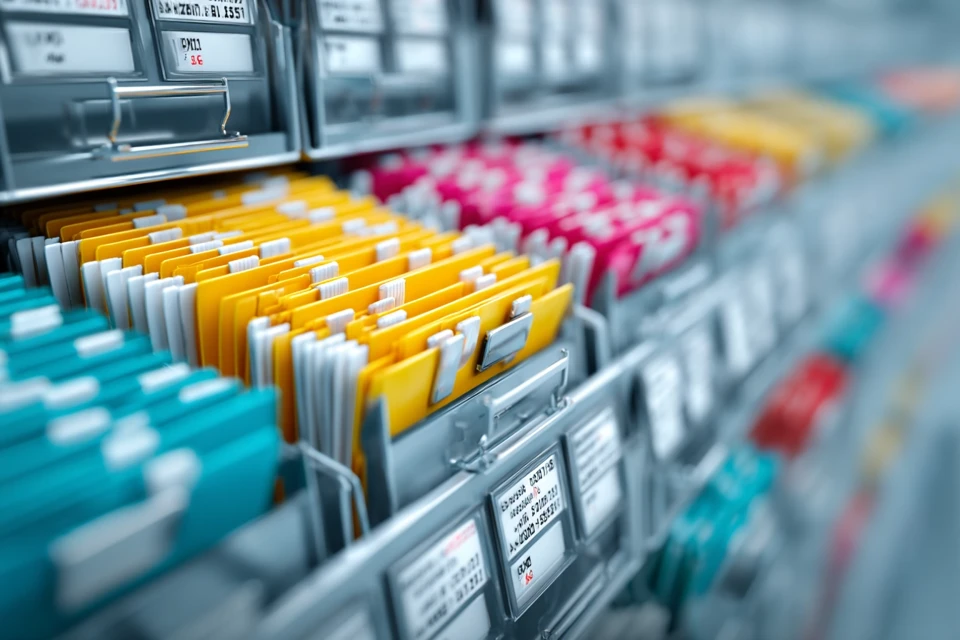Structuring the Chaos: Techniques for Organizing Unstructured Data in 2025
In today's data-driven world, unstructured data—such as emails, social media posts, images, and videos—constitutes over 90% of the information generated. Transforming this vast, unorganized data into structured formats is crucial for businesses aiming to leverage AI and analytics effectively. This article explores the latest techniques and tools for structuring unstructured data, ensuring organizations can harness its full potential.
Techniques for Structuring Unstructured Data
Natural Language Processing (NLP)
NLP is essential for extracting meaningful information from text-based data. Key NLP techniques include:
- Tokenization: Breaking text into words or phrases for analysis.
- Named Entity Recognition (NER): Identifying entities like names, dates, and locations.
- Sentiment Analysis: Determining the emotional tone of text.
- Topic Modeling: Discovering abstract topics within a collection of documents.
These techniques enable the conversion of unstructured text into structured data formats, facilitating easier analysis and integration into databases.
Optical Character Recognition (OCR)
OCR technology converts different types of documents, such as scanned paper documents, PDFs, or images captured by a digital camera, into editable and searchable data. This process is vital for digitizing printed or handwritten content, making it accessible for data analysis and storage.
Computer Vision
Computer vision techniques analyze visual data to extract structured information. Applications include:
- Object Detection: Identifying and classifying objects within images or videos.
- Facial Recognition: Detecting and verifying human faces in digital images.
- Scene Understanding: Interpreting the context of a visual scene.
These methods are instrumental in industries like security, retail, and autonomous vehicles, where visual data analysis is paramount.
Metadata Annotation
Adding metadata to unstructured data provides context, making it easier to organize and retrieve. Types of metadata include:
- Descriptive Metadata: Information like title, author, and keywords.
- Structural Metadata: Details about the format, structure, and relationships of data.
- Administrative Metadata: Information for managing resources, such as creation date and access rights.
Proper metadata annotation enhances data discoverability and management.
Automated Data Labeling
Automated data labeling uses machine learning models to assign labels to data points, reducing manual effort. This process is crucial for training supervised learning models and improving data organization. Tools and platforms now offer automated labeling features, accelerating the preparation of large datasets for analysis.
Extract, Transform, Load (ETL) Processes
ETL processes involve extracting data from various sources, transforming it into a suitable format, and loading it into a data warehouse or database. Modern ETL tools can handle unstructured data by incorporating NLP and machine learning techniques during the transformation phase, enabling the integration of diverse data types into structured systems.
Brands Leveraging Structured Unstructured Data
Several companies have adopted innovative approaches to structure unstructured data:
- Pulse: A startup focusing on converting unstructured data into formats suitable for machine learning models. Pulse's technology addresses the challenge of preparing diverse data types for AI applications, enhancing data usability across industries.
- MindsDB: An open-source AI platform that integrates with large language models to extract relevant data from unstructured text and insert it into databases. This approach simplifies the process of structuring unstructured data using familiar SQL commands.
- Shelf: Offers a platform that prepares both structured and unstructured data for generative AI applications. Shelf's tools focus on cleaning, organizing, and maintaining data quality to ensure reliable AI outputs.
Tool Spotlight: OpenRefine
OpenRefine is an open-source desktop application designed for data cleanup and transformation. It operates similarly to spreadsheet applications but offers more powerful features for data wrangling. Key functionalities include:
- Data Cleaning: Identifying and correcting inconsistencies, duplicates, and errors in datasets.
- Transformation: Applying operations to transform data formats and structures.
- Faceting and Filtering: Exploring data subsets based on specific criteria.
OpenRefine is particularly useful for preparing unstructured data for analysis, making it a valuable tool for data scientists and analysts.
In conclusion, structuring unstructured data is a critical step in unlocking its potential for AI and analytics. By employing techniques like NLP, OCR, computer vision, metadata annotation, automated labeling, and ETL processes, organizations can transform chaotic data into organized, actionable insights. Tools like OpenRefine further facilitate this transformation, ensuring data is clean, consistent, and ready for advanced analysis.
